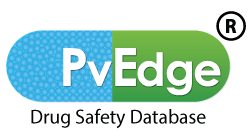Signal detection is key to pharmacovigilance, identifying safety issues with drugs before they escalate. With growing data from trials and surveillance, detecting signals has become more complex. Ineffective detection risks patient safety, regulatory penalties, and loss of public trust. This blog explores these risks, the need for effective detection, and how PvEdge’s® advanced techniques can enhance the process.
The Risk of Ineffective Signal Detection
Ineffective signal detection can have serious repercussions for both patients and pharmaceutical companies. Failure to detect significant safety signals promptly can lead to the following outcomes:
Delayed Identification of Adverse Events: Inadequate signal detection delays the identification of adverse drug reactions, posing an increased risk to patients and potentially causing harm.
Regulatory Non-Compliance: Missing or mismanaging safety signals can lead to non-compliance with regulatory requirements. This could result in sanctions, fines, or the withdrawal of a product from the market.
Loss of Trust and Reputation: Companies that fail to manage safety signals effectively risk reputational damage, losing the trust of healthcare professionals, regulatory bodies, and the public.
Why Effective Detection is Crucial
Effective signal detection is essential for several reasons:
Patient Safety: The primary goal of signal detection is to safeguard patient safety by identifying potential risks with pharmaceutical products early, enabling proactive interventions.
Regulatory Compliance: Adhering to regulatory standards requires robust signal detection processes to monitor and report safety issues in a timely and accurate manner.
Enhanced Decision-Making: Effective signal detection provides the data necessary to make informed decisions regarding product safety, labeling updates, and risk management strategies.
Techniques for Improving Signal Detection
To improve signal detection, several techniques can be employed:
Qualitative and Quantitative Analysis: A combination of qualitative insights and quantitative methods enhances the ability to detect safety signals. Qualitative analysis interprets the context of the data, while quantitative methods like Proportional Reporting Ratio (PRR) and the Chi-Square Algorithm provide statistical significance to potential safety issues.
GVP Modules: The implementation of Good Pharmacovigilance Practice (GVP) modules, such as GVP Module XL Addendum and GVP Module VII, helps ensure compliance with regulatory requirements and improves signal detection processes.
Automation: Automating signal detection processes enhances efficiency and accuracy. PvEdge® offers advanced automation solutions that integrate qualitative and quantitative techniques for comprehensive signal detection.
How PvEdge® Enhances Signal Detection
PvEdge’s® signal detection capabilities are designed to streamline and optimize the detection process. The solution includes:
Automated Signal Detection: PvEdge® uses automation to perform signal detection efficiently, incorporating both qualitative and quantitative methods, including PRR and Chi-Square Algorithm, for a thorough analysis of safety data.
Integration with GVP Modules: PvEdge’s® solution aligns with GVP Module XL Addendum and GVP Module VII, ensuring compliance with regulatory standards and enhancing signal detection robustness.
Advanced Data Processing: PvEdge® processes large volumes of data quickly, identifying potential safety signals with high accuracy, significantly reducing the risk of missing adverse events.
Effective signal detection is essential for patient safety, regulatory compliance, and a company’s reputation. While ineffective detection can have serious repercussions, PvEdge’s® advanced techniques and automation can significantly improve the process. By integrating qualitative and quantitative analyses, GVP modules, and automation, companies can enhance signal detection and better safeguard public health. Adopting these innovations is crucial in today’s evolving field of pharmacovigilance.



